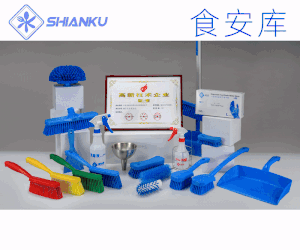食品伙伴網(wǎng)訊 2024年11月14日,據(jù)歐盟食品安全局(EFSA)消息,應(yīng)歐盟委員會(huì)要求,歐盟動(dòng)物飼料添加劑和產(chǎn)品(FEEDAP)研究小組就香紫蘇油(clary sage oil)作為所有動(dòng)物飼料添加劑的安全性和有效性發(fā)表科學(xué)意見(jiàn)。
經(jīng)過(guò)評(píng)估,專家小組認(rèn)為在建議的使用條件下該添加劑對(duì)目標(biāo)物種、消費(fèi)者和環(huán)境是安全的。由于香紫蘇油被認(rèn)為可以給食物調(diào)味,并且它們?cè)陲暳现械墓δ芘c在食物中的功能基本相同,因此無(wú)需進(jìn)一步證明其功效。部分原文報(bào)道如下:
Following a request from the European Commission, EFSA was asked to deliver a scientific opinion on the safety and efficacy of an essential oil from the fresh or dried flowering stems of Salvia sclarea L. (clary sage oil) when used as a sensory additive in feed and in water for drinking for all animal species. The EFSA Panel on Additives and Products or Substances used in Animal Feed (FEEDAP) concluded that the additive under assessment is considered safe up to the maximum use level in complete feed of 15 mg/kg for veal calves (milk replacers), cattle for fattening, sheep/goats, 10 mg/kg for horses, 20 mg/kg for dogs, salmonids and ornamental fish. For the other target species, the calculated safe concentrations were 5 mg/kg for chickens for fattening, 8 mg/kg for laying hens, 7 mg/kg for turkeys for fattening, 9 mg/kg for piglets, 11 mg/kg for pigs for fattening, 14 mg/kg for sows, 13 mg/kg for dairy cows, 8 mg/kg for rabbits and 4 mg/kg for cats. These conclusions were extrapolated to other physiologically related species. For any other species, the additive is safe at 4 mg/kg complete feed. The FEEDAP Panel considered that the use level in water of clary sage oil is safe provided that the total daily intake of the additive does not exceed the daily amount that is considered safe when consumed via feed. The use of clary sage oil in animal feed under the proposed conditions of use is safe for the consumer and the environment. Regarding user safety, the essential oil under assessment should be considered as an irritant to skin and eyes and as a dermal and respiratory sensitiser. Since the oil of the flowering stems of S. sclarea is recognised to flavour food and its function in feed would be essentially the same as that in food, no further demonstration of efficacy was considered necessary.
本文由食品伙伴網(wǎng)食品資訊中心編輯,有任何疑問(wèn),請(qǐng)聯(lián)系news@foodmate.net。
相關(guān)政策解讀











 地區(qū):
地區(qū):






 魯公網(wǎng)安備 37060202000128號(hào)
魯公網(wǎng)安備 37060202000128號(hào)



